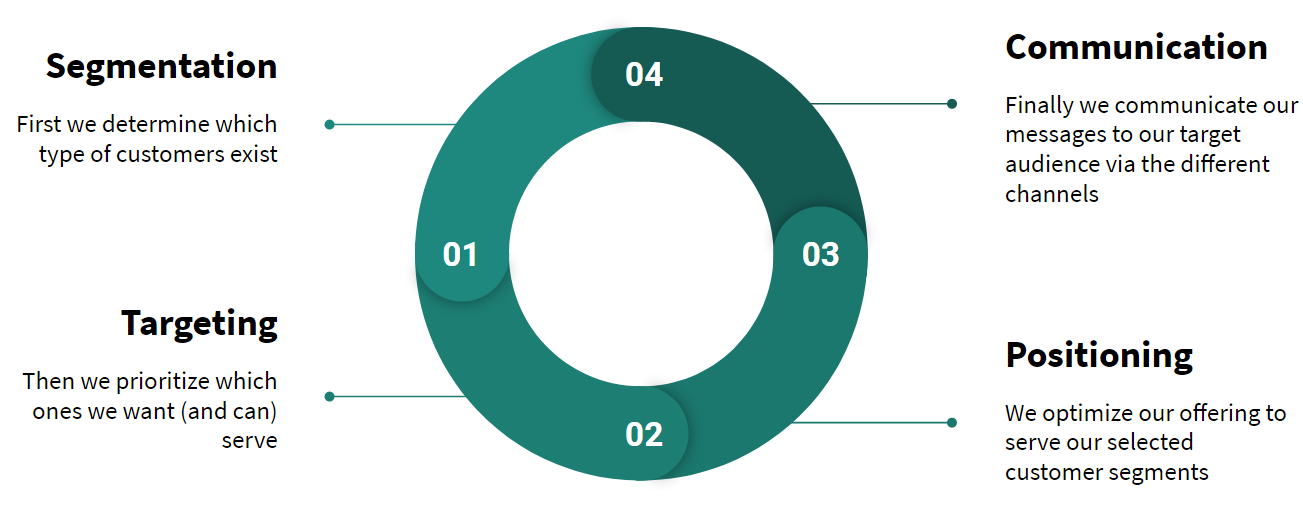Mark Twain once said, “I didn’t have time to write a short letter, so I wrote a long one instead.” This applies to most marketing strategies, whereas much planning is put into keeping messages clear and concise, tailored to the needs and wants of target audiences. But who is your target audience? Who is your brand speaking to? With Micro-Marketing ever more present, how do you analyze and communicate to all of these subgroups?
Traditionally, the market was divided into four categories of geographic segmentation, demographic segmentation, psychographic segmentation and behavioural segmentation. Big groups, sharing mutual traits such as gender, age, income level etc. As time went by, and data became more available, a more detailed segmentation approach was developed, especially with B2B companies and customer intimate firms. One of the most popular tools, Google Analytics, gave marketers the ability to granularly their customers. This deep dive into customer’s subgroups allowed marketers to better understand nuances of needs&wants, meet and communicate them across different channels. Take the following messaging matrix as an example
| Message | Customer Segment | Channel |
| Doritos Blaze are Very Cheap | Students | Facebook ads |
| Doritos Blaze are Rich in Proteins | Male Athletes, aged 22-26 | Instagram Fitness Groups |
| Doritos Blaze Keeps you Up | Truck Drivers | Road Signs |
First, during the segmentation process, marketers evaluate the brand’s biggest customer segments. Second, they target their most relevant audience, based on competition, size and expected growth. Third, they position their products, to appeal to their selected segments, and come up with different messages to communicate their offerings. Finally, they communicate them in the most relevant fashion.

Marketing Process
However, this segmentation level simply doesn’t suffice anymore, to keep up with the market’s expectations. Customers are presuming brands should already be able to speak to them “personally”. This is expected even from companies considered “operationally excellent firms”, who put their efforts on low costs, such as Walmart. And why not? after all, every single action the consumers take is monitored. Every click, every purchase, every post, location and like. A small price we’re apparently willing to pay, just as long (amongst other benefits) that the world around us “knows who we are”. They are right of course, to an extent at least. This expectation is asserted as several marketing automation tools such as browsing triggers (those little ads popping up everywhere showing you something you clicked on), reinforce the consumers perspective of “being followed”. Nevermind those are actually very simple marketing tools, the bottom line is – giving away so much information is met with a feeling of a called for relevance. And in the cruel world of e-commerce, there’s no more tolerance for a sub-par experience. After all, unlike a physical store, everything is just a click away.
This micro-marketing evolution is definitely within reach. The two main difficulties, of course, are making sense in all that data and executing upon it. Just because a certain company has access to its consumers’ clickstream, demographics, location etc, doesn’t mean it’s easy for it to develop insights, to give meaning to all these numbers. In addition, the sheer number and types of segments potentially generated would be overwhelming. Just Imagine a marketing agency having to segment, target, position and communicate thousands and thousands of different messages per brand. A few years back, such a task would sound completely impossible. Nowadays, using the help of data science, this is now possible. Because data science is an interdisciplinary field of scientific methods, such as statistics and computer science, it’s far quicker at extracting knowledge from huge amounts of data. The AI, based on statistical algorithms, automatically finds correlations between different elements of the network. For example, a user who looked at a product a few times is more likely to purchase it, given a coupon meeting a price point is sent. The Machine would also constantly A|B test and improve itself, based on selected KPIs.
They say knowledge is power… However, knowing it all doesn’t quite cut it. Because such knowledge needs to be converted into actions, actionable messages sent in real time to your customers. A great example of personalized execution using the most advanced form of micro-segmentation, “1:1” – is the email channel. Traditionally, email marketers would segment their channel based on the above mentioned, or based on “just subscribed”, “didn’t open their mail in the last 6 months” or “recently purchased”. Though still effective for large-scale campaigns, this technique is hardly suitable for ongoing daily newsletter updates. Big e-commerce companies, such as Groupon, are already executing personalized email campaigns, whereas all the user data is applied in order to generate a personalized experience. Such campaigns focus on showing the user, in addition to products left in the cart or looked at, new products from relevant categories. If the user likes consumer electronics – show him\her the latest gadget etc. These campaigns also try and predict upcoming trends, such as holiday purchase patterns.
This personalisation, this micro-marketing evolution, has a tremendous competitive value. Both in (1) customer lifetime value and in (2) market share growth. For existing customers, the better a brand is capable of microsegment, communicate and meet the needs of their individual customer, the more he or she is likely to develop a sustainable relationship with the brand. The process of micro-segmentation also enables the brand to target more groups, previously ignored, and largely increase the company’s reach.
Written by Itai Eshkar, Head of Personalised Marketing @ Personalics

